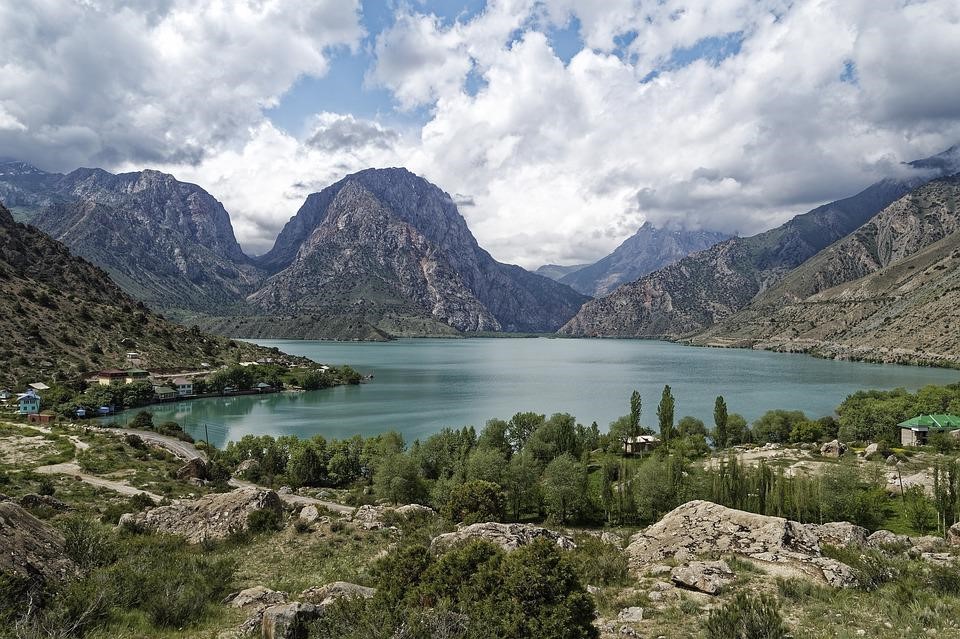“Bullets accidentally ended up on the territory of Tajikistan” after a shootout between Taliban and the Islamic State – Khorasan Province (ISKP) forces near the Afghan-Tajik border, according to Nurbek Bekmurazev, of the Jamestown Foundation. Last month Radio Ozodi reported that several rockets were launched from the Hojagor district of Takhar province, Afghanistan into the neighboring Panj district in Tajikistan. Bekmurazev says that a “GKNB [Tajikistan State Security Committee] statement… argued the situation on the border was stable, and the Taliban was conducting operations to locate and disarm the perpetrators.” Western analysts following Central Asia are growing increasingly concerned about intensifying ISKP activities in Afghanistan and neighboring states. The recent rocket attack was the second in three weeks in Tajikistan. Conflicting reports coming out of Central Asia attribute the attacks to both Taliban and ISKP forces.
Taliban leaders, according to Bekmurazev, are frustrated by what they call “false accusations.” They have been targeted by the ISKP terrorists in the past. In November 2019 terrorists attacked the Ishkobod border station as a sign of loyalty to the new caliph and in August 2018 four tourists in the Dangara region of Tajikistan were killed and three foreign citizens injured. The UN Security Council reports that recent attacks continue the trend of Islamic State – Khorasan Province. ISKP power is growing since the US withdrawal from Afghanistan last August. Since then, the number of its operatives has “increased from 2,000 to roughly 4,000, with some new recruits coming from recently released prisoners in Afghanistan,” according to an early May 2022 NY Times article. In recent weeks the violence has drawn the attention of both China and Russia.
The Taliban want to be viewed as a security partner. These attacks are straining its credibility and undermining “its promise that the territory of Afghanistan will not be used for launching terrorist attacks on foreign countries,” says Bekmurazev. Central Asian military analysts are concerned that the deep mistrust between Tajikistan and other Central Asian states and the Taliban could further destabilize the region. The level of violence has risen dramatically over the last two weeks in the Pamir region of Tajikistan and is now higher than any period since the 1997 civil war ended.
Radio Ozodi reports that on May 16 law enforcement used tear gas and snipers to break up protests and quickly cut off the region’s internet connection. The following day the government launched a “counter-terrorism” operation, killing dozens and arresting hundreds. While the numbers killed, injured, or arrested may not be large in comparison to the war in Ukraine, it marks an increase in violence covering almost half of Tajikistan’s territory. In 2015 the government used the violence to justify silencing the opposition Islamic Renaissance Party.
Unrest in the Pamir region of Tajikistan, in particular, is strategically significant as it is located along the border area with China and contains the only open crossing between the two countries. It is a lucrative commercial trade route and one the Chinese watch carefully due to its use as a drug transit route into Western China. Edward Lemon, writing in the Eurasia Daily Monitor, reports that although the US has provided Tajikistan with over $364 million in security assistance since 2000, Dushanbe “leans increasingly on China and Russia for patronage, [and] the Tajikistani government is scapegoating the West for the violence its own policies have helped create or amplify.” Analysts monitoring the violence suggest that the situation has deteriorated to the point that ever more “people in Dushanbe and Moscow are openly talking about the risk that conditions there may soon trigger a full-scale civil war.”
Paul Goble, of the Jamestown Foundation, points out that “Dushanbe’s problems have compelled it to publicly ask Moscow to be ready to send forces into the region, just as [Moscow] did in Kazakhstan last January.” Tajikistan’s President has formerly requested Russian President Vladimir Putin be prepared to quell violence as it destabilizes the whole Central Asian region.
Although the war in Ukraine has overshadowed many of the recent events in Central Asia, Xi Jinping is monitoring the situation. A sect of Islam led by the Aga Khna, an Ismali, is gaining influence in the area and could provoke a response from China. Beijing considers him a dangerous threat. Xi has placed military capabilities inside Tajikistan, and is prepared to act, if necessary. The Chinese government has made it clear in recent statements that it would like to take control of the Pamir region. The region is a powder keg that could blow, according to one analyst familiar with the environment on the ground.
Daria Novak served in the U.S. State Dept.
Photo: Tajikistan (photo)
